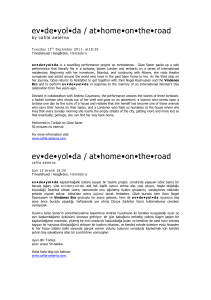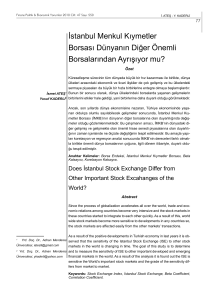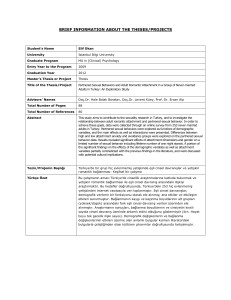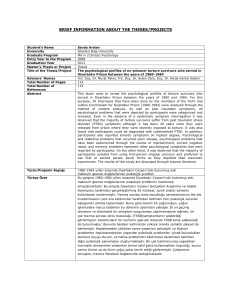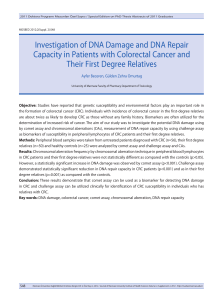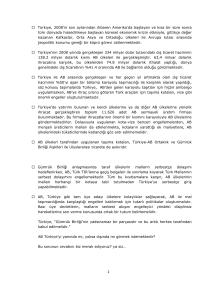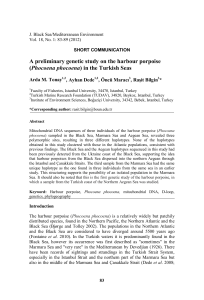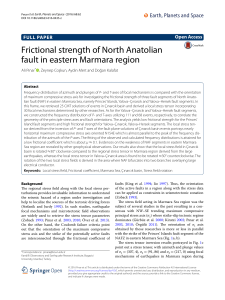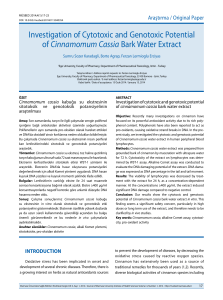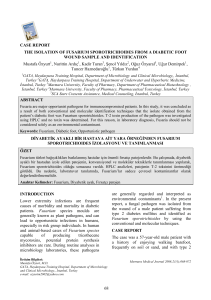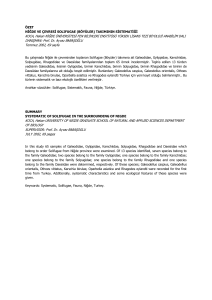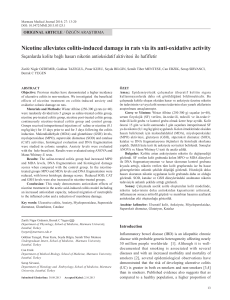Marmara Denizi`nde Deprem Araştırmaları: Denizaltı Gözlem İstas
advertisement
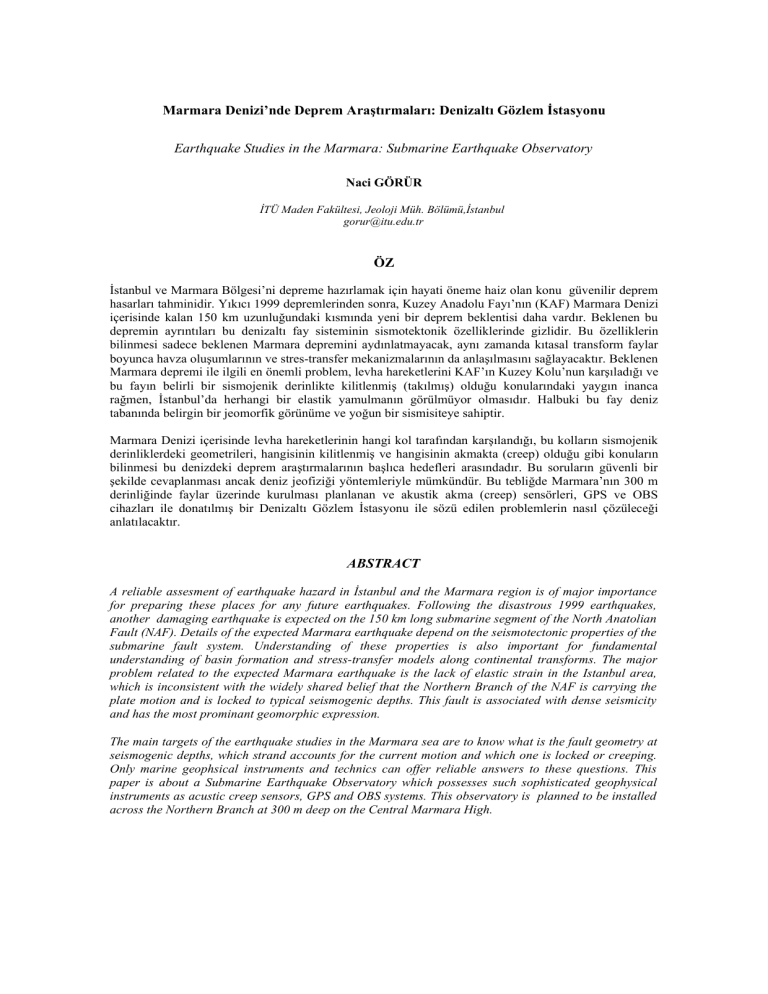
Marmara Denizi’nde Deprem Araştırmaları: Denizaltı Gözlem İstasyonu Earthquake Studies in the Marmara: Submarine Earthquake Observatory Naci GÖRÜR İTÜ Maden Fakültesi, Jeoloji Müh. Bölümü,İstanbul gorur@itu.edu.tr ÖZ İstanbul ve Marmara Bölgesi’ni depreme hazırlamak için hayati öneme haiz olan konu güvenilir deprem hasarları tahminidir. Yıkıcı 1999 depremlerinden sonra, Kuzey Anadolu Fayı’nın (KAF) Marmara Denizi içerisinde kalan 150 km uzunluğundaki kısmında yeni bir deprem beklentisi daha vardır. Beklenen bu depremin ayrıntıları bu denizaltı fay sisteminin sismotektonik özelliklerinde gizlidir. Bu özelliklerin bilinmesi sadece beklenen Marmara depremini aydınlatmayacak, aynı zamanda kıtasal transform faylar boyunca havza oluşumlarının ve stres-transfer mekanizmalarının da anlaşılmasını sağlayacaktır. Beklenen Marmara depremi ile ilgili en önemli problem, levha hareketlerini KAF’ın Kuzey Kolu’nun karşıladığı ve bu fayın belirli bir sismojenik derinlikte kilitlenmiş (takılmış) olduğu konularındaki yaygın inanca rağmen, İstanbul’da herhangi bir elastik yamulmanın görülmüyor olmasıdır. Halbuki bu fay deniz tabanında belirgin bir jeomorfik görünüme ve yoğun bir sismisiteye sahiptir. Marmara Denizi içerisinde levha hareketlerinin hangi kol tarafından karşılandığı, bu kolların sismojenik derinliklerdeki geometrileri, hangisinin kilitlenmiş ve hangisinin akmakta (creep) olduğu gibi konuların bilinmesi bu denizdeki deprem araştırmalarının başlıca hedefleri arasındadır. Bu soruların güvenli bir şekilde cevaplanması ancak deniz jeofiziği yöntemleriyle mümkündür. Bu tebliğde Marmara’nın 300 m derinliğinde faylar üzerinde kurulması planlanan ve akustik akma (creep) sensörleri, GPS ve OBS cihazları ile donatılmış bir Denizaltı Gözlem İstasyonu ile sözü edilen problemlerin nasıl çözüleceği anlatılacaktır. ABSTRACT A reliable assesment of earthquake hazard in İstanbul and the Marmara region is of major importance for preparing these places for any future earthquakes. Following the disastrous 1999 earthquakes, another damaging earthquake is expected on the 150 km long submarine segment of the North Anatolian Fault (NAF). Details of the expected Marmara earthquake depend on the seismotectonic properties of the submarine fault system. Understanding of these properties is also important for fundamental understanding of basin formation and stress-transfer models along continental transforms. The major problem related to the expected Marmara earthquake is the lack of elastic strain in the Istanbul area, which is inconsistent with the widely shared belief that the Northern Branch of the NAF is carrying the plate motion and is locked to typical seismogenic depths. This fault is associated with dense seismicity and has the most prominant geomorphic expression. The main targets of the earthquake studies in the Marmara sea are to know what is the fault geometry at seismogenic depths, which strand accounts for the current motion and which one is locked or creeping. Only marine geophsical instruments and technics can offer reliable answers to these questions. This paper is about a Submarine Earthquake Observatory which possesses such sophisticated geophysical instruments as acustic creep sensors, GPS and OBS systems. This observatory is planned to be installed across the Northern Branch at 300 m deep on the Central Marmara High.

